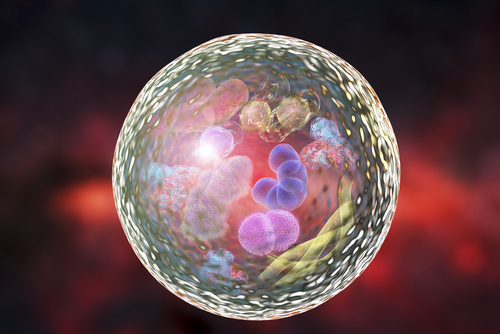Alpha-Synuclein Protein May Contribute Toward Batten Disease Progression
Written by |

High levels of a protein associated with Parkinson’s disease, called alpha-synuclein, may contribute to the progression of late infantile Batten disease, according to a recent study.
The study, “Autophagy–lysosome pathway alterations and alpha-synuclein up-regulation in the subtype of neuronal ceroid lipofuscinosis, CLN5 disease,” was published in the journal Scientific Reports.
Batten disease, also known as neuronal ceroid lipofuscinosis, refers to a group of rare, inherited, neurological conditions of which there are several different types, depending on which particular gene is mutated.
CLN5 disease is caused by mutations in the CLN5 gene, which provides instructions to make a protein that, when not functional, prevents the normal production of cellular components involved in the cell’s “waste-cleaning system,” promoting the accumulation of potentially harmful debris inside cells.
One of the naturally occurring waste-cleaning mechanisms is called autophagy, by which cells degrade or recycle components that are damaged or no longer needed. Autophagy functions as the cell’s housekeeping system that destroys toxic materials through vesicles called lysosomes.
When autophagy is dysregulated or turns overactive, it can severely damage cells and sometimes results in cell death. This process has been implicated in the progression of lysosomal storage disorders such as Batten disease. However, it is not fully clear how the different genes linked to this disease are involved with autophagy.
Researchers at Kansas State University further explored the role of the CLN5 gene by evaluating autophagy process in cells genetically engineered to mimic CLN5 deficiency, as well as skin cells from patients with Batten disease (or healthy controls).
Genetically engineered cells and patients’ skin cells were found to have increased amounts of proteins involved in autophagy. This was not due to impaired ability of the cells to destroy the autophagy waste vesicles (their waste-cleaning system), but rather due to an increased activation of this cleaning process.
These findings suggest that “cells lacking the CLN5 protein have higher basal levels of autophagic activity,” researchers wrote.
Additional analysis of potential genes involved in the autophagy process revealed that CLN5-mediated effect was mostly caused by indirect modulation of SNCA — the gene that gives rise to the alpha-synuclein protein. Patients’ cells had about 90-fold increased levels of SNCA compared to healthy controls, and significantly higher levels of alpha-synuclein.
Alpha-synuclein is an abundant and important protein in nerve cells that is involved in synaptic vesicles formation (required for nerve cells to communicate), being directly associated to several human neurological disorders including Parkinson’s disease. However, this protein also has been detected in other tissues.
A detailed evaluation of alpha-synuclein present in the engineered CLN5 cells showed that the protein was not localized inside the autophagic vesicles. This suggested the protein was not being selected for degradation. Instead, alpha-synuclein coordinated the vesicles’ localization inside cells, helping to form clusters of waste vesicles.
Genetic manipulation of cells to lack both CLN5 and SNCA had no impact on the enhanced autophagic activity, suggesting that alpha-synuclein is not directly implicated in the autophagy activation process, but may be in the prevention of vesicles’ destruction.
These findings suggest “a possible function of alpha-synuclein in non-neuronal cells,” researchers wrote, “similar to its role in presynaptic vesicles in neurons.”
Additional studies are still required to better understand the contribution of alpha-synuclein for Batten disease progression.




